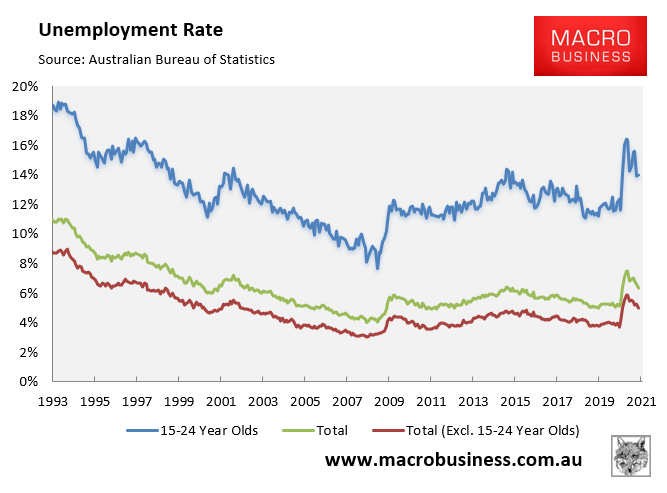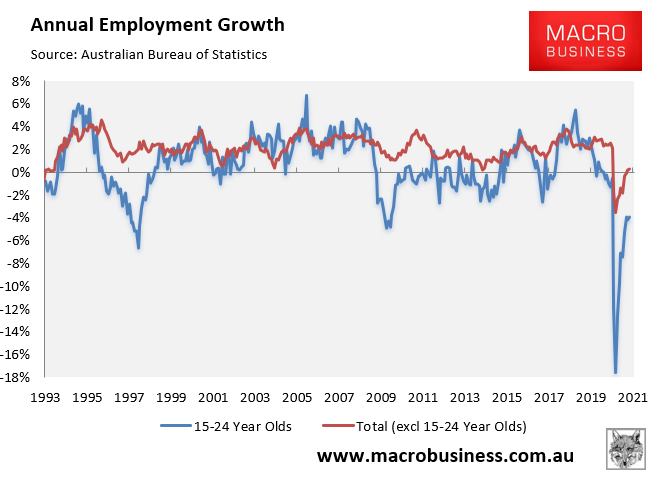The Australian Bureau of Statistics (ABS) yesterday released labour market data for the month of January, which reveals that the youth labour market (i.e Australians aged 15-24) continues to recover at a much slower pace than the broader market.
Australia’s youth unemployment rate was 13.9% in January, the same as December. This compares to an unemployment rate of 5.0% across the rest of the labour market.

Youth jobs fell by 8,100 in January versus a 37,300 increase in jobs across the rest of the labour market, with youth jobs still 89,900 below their March pre-COVID level:
Advertisement


